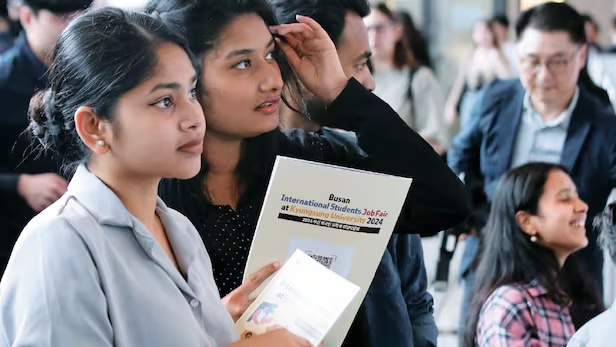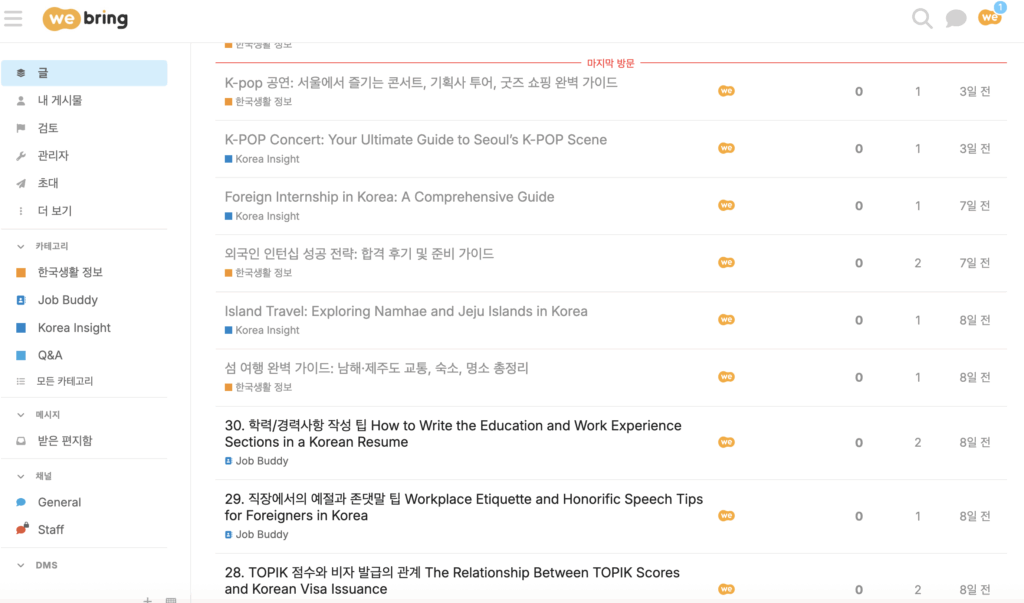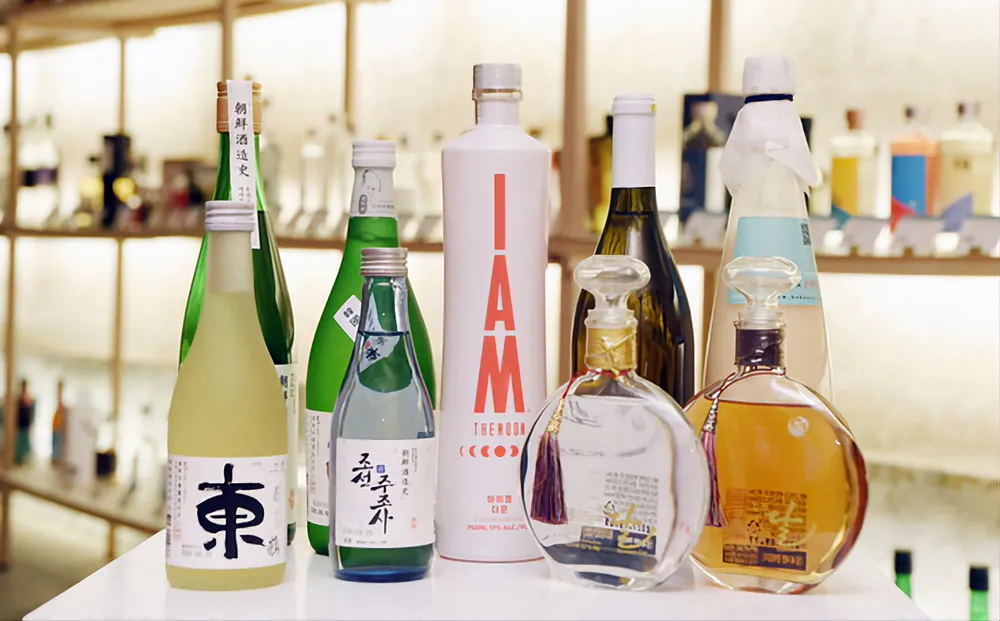When people think of Korea, major conglomerates like Samsung, LG, and Hyundai often come to mind first. However, it’s actually the startups that have been rapidly gaining ground, driving innovation and redefining the future of work. Many of these startups actively recruit international talent as they aim for global expansion. In this article, we’ll take a comprehensive look at startup culture, employee benefits, company visions, and the opportunities available to foreigners in Korea’s booming startup ecosystem. Stable employment at a large corporation is no longer the only answer — there are growing pathways to build your career and thrive creatively within startups as well.
1) Korea’s Startup Ecosystem: Scale & Growth Trends
Government Support & Active Investment
The Korean government has implemented a wide range of startup support initiatives, including grants, investment attraction programs, and accelerator schemes. These efforts have produced numerous startups across various sectors, including IT, biotech, edtech, and fintech. Some companies, like Coupang and Baedal Minjok, have even grown into unicorns (valued over 1 trillion KRW). Amid such momentum, foreign talent is increasingly welcomed — especially in areas like international marketing, translation and interpretation, global operations, and overseas partnerships, where international expertise is crucial.
Embracing Language and Cultural Diversity
Startups tend to be more flexible than large corporations, with many adopting English as a working language. Companies developing apps or web services for global markets benefit greatly from having foreign team members. For example, when refining UI/UX to align with global standards or running international social media campaigns, the insights and perspectives of non-Koreans are invaluable.

2) Startup Advantages: Flat Culture & Rapid Growth
Flat, Flexible Organizational Culture
While hierarchical structures still exist in Korea’s large corporations, startups generally foster a flat organization where people call each other by English names or nicknames and open debate is encouraged. Many startups also offer flexible working hours or remote work options. Language can be a barrier for foreigners, but various solutions — including English-language meetings and real-time interpretation tools — are often implemented to ensure smooth communication.
Fast Decision-Making & Multi-Role Opportunities
Startups operate with smaller teams and swift project-based execution. While one’s main role may be in marketing, development, or design, you can also lend support to other areas or join brainstorming sessions for new products. Foreign employees can leverage their global networks to conduct overseas market research, create international content, and explore a variety of tasks — making it an exceptional opportunity to expand your career skill set.
Stock Options & Reward Systems
Some startups may offer lower initial salaries due to limited funding, but they often compensate through stock options — the right to purchase company shares at a set price — or equity shares. If the company achieves significant success, such as an IPO or acquisition, these options can bring substantial returns. Of course, there’s always an associated risk, as success is never guaranteed.
3) Startup Drawbacks: Instability, Long Hours & Lack of Structure
Financial Instability
If a startup fails to secure funding, it may be forced to shut down. Thus, job security is typically lower than in large companies. Delayed paychecks or lower salaries are not uncommon, and limited budgets may result in underdeveloped employee benefits and training systems. Foreign employees should also be cautious — if the company is unable to sponsor visas, it could jeopardize your legal stay in Korea.
Confusion from Lack of Structure
Startups often lack established systems for personnel, accounting, or workflow, which can lead to inconsistent directions or sudden changes in plans. Foreigners may be frustrated when yesterday’s decisions change overnight. If you’re still learning Korean and internal documentation is poor or replaced by verbal instructions, it can become stressful.
Potential for Long Working Hours
When deadlines are tight or demo days for investors approach, extended work hours or weekends may be necessary. While more startups are embracing a healthy work-life balance, long hours are still frequently associated with the drive for success.
4) Foreign Hiring Process & Visas
Visa Sponsorship Required
Even startups must issue a proper work visa (such as E-7) to hire foreign employees. While large corporations are experienced in this, startups may be unaware of the procedures, especially if they’re hiring foreign nationals for the first time. You may need to assist your employer in navigating immigration office requirements. It’s essential to ensure the company’s industry and financial stability meet the criteria for visa issuance (such as revenue size, employee count, and so on).
Available Roles in Startups
Opportunities span areas such as product development (frontend/backend), design, global marketing and sales, translation and copywriting, operations, and support. If the position requires high specialization or is tailored to overseas markets — and local hiring is difficult — foreign employment becomes even more viable. If you want to stay long-term, it’s best to ask whether the company has financial stability and prior experience sponsoring visas.
5) Success Stories: Foreigners at Korean Startups
X (French Developer)
After majoring in computer science in France, X came to Korea as an exchange student and met a startup CEO at a networking event. After graduation, he returned to Korea and joined the fintech startup, which sponsored his E-7 visa. X says, “At first, I had to work overtime frequently due to the small team size, but I found it rewarding that my suggestions quickly became part of the actual service. All code was written in English, so the lack of Korean wasn’t a big problem.” Two years later, the company received Series B investment, and his salary also increased — boosting his satisfaction substantially.
Y (American Edtech Marketer)
Y was working as an English teacher in Korea when she was recruited as a global marketing lead for an English-learning app developed by a Korean startup. The company valued her language and educational expertise, and helped her transition from an E-2 (teaching) to an E-7 (professional) visa. She mainly used English at work and spoke Korean with colleagues as needed. Y shared, “Startup culture is very open, and I love seeing my ideas implemented in the product. Though it feels unstable at times, it offers incredible personal growth opportunities.”
Conclusion: Startups Welcome Foreigners & Offer Abundant Opportunities
For foreigners seeking jobs in Korea, startups can be just as attractive as major corporations. Their flat and creative organizational culture, diverse roles that utilize global skillsets, and potential rewards like stock options are distinct advantages. Of course, you’ll need to weigh the downsides such as financial instability, lack of structure, and potentially long hours.
Most hiring is done via startup-focused platforms like Wanted and RocketPunch, as well as LinkedIn and company websites. To obtain an E-7 visa, the company must sponsor it. Since many startups are equipped for English communication, TOPIK scores are not always required — but being able to speak Korean broadens your collaboration scope.
Ultimately, startups are where “high growth, high risk, and high reward” coexist. If you’re a foreigner who values innovation and accomplishment over stability, pursuing a career at a Korean startup is worth considering. As the Korean market continues to globalize and K-startups expand internationally, more foreign professionals are joining these teams — making this an excellent time to dive in.

WeBring Service : Provides personalized services to foreigners living in Korea
Exclusive offer: Introducing foreign car rental in Korea, WeBring-SoCar














